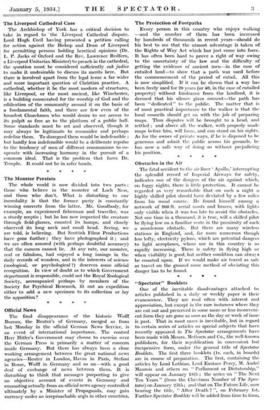The Protection of Footpaths Every person in this country who
enjoys walking —and the number of them has been increased by hundreds of thousands in recent years—should do his best to see that the utmost advantage is taken of the Rights of Way Act which has just come into force. - It has often been hard to prove a right of way owing to the uncertainty of the law and the difficulty of getting the evidence of ancient men—in the case of entailed land—to show that a path was used before the commencement of the period of entail. All this is now simplified. If it can be shown that a way has been freely used for 20 years (or 40, in the case of entailed • property) without hindrance from the landlord, it is deemed that his silence gives consent—the path has been " dedicated " to the public. The matter that is of most practical importance to the walker is that the local councils should get on with the job of preparing maps. Thus disputes will be brought to a head, and settled ; and above all, the walker, with properly made maps before him, will know, and can stand on his rights. As for the owner of private ways, if he is disposed to be generous and admit the public across his grounds, he has now a safe way of doing so without prejudicing his position.






































 Previous page
Previous page